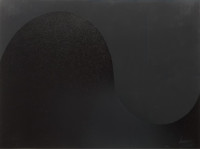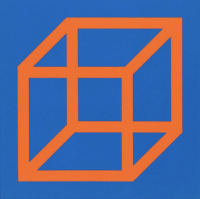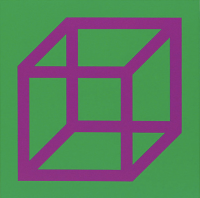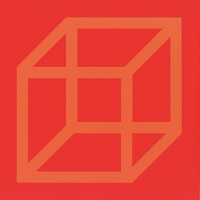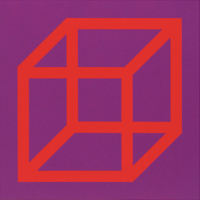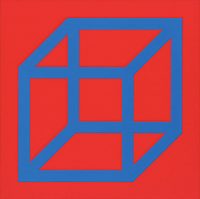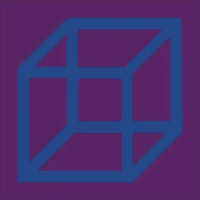


Details
Artist
Styles
Water-based woodcut - Type of Paper: Fukui-Kozo (Japanese Handmade paper) - Signed and numbered lower right - Published by Juventudes Musicales de Espana, Barcelona - Printed by Takuji Hamanaka, Watanabe Studio Ltd., Brooklyn, New York - Previously catalogued as W-07 // Steps (Form Derived from a Cubic Rectangle) by Sol LeWitt, a woodcut print from 1992, measures 22 x 29.6 cm. This limited edition artwork, printed on Fukui-Kozo, a Japanese handmade paper, was published by Juventudes Musicales de España and printed by Takuji Hamanaka at Watanabe Studio Ltd. in Brooklyn, New York. The piece features a sequence of geometric steps rendered in vibrant primary colors, set against a striking yellow background with a red border. LeWitt's conceptual approach is evident in the precise, mathematical arrangement of the shapes, inviting viewers to engage with the interplay of form, space, and perspective. The woodcut technique imparts a textured, organic quality, blending precision with the natural warmth of the material.
Steps (Form Derived from a Cubic Rectangle), 1992
form
Medium
Size
55.8 x 75.2 cm
- Inches
- Centimeters
Edition
Price
- USD
- EUR
- GBP
Details
Artist
Styles
Water-based woodcut - Type of Paper: Fukui-Kozo (Japanese Handmade paper) - Signed and numbered lower right - Published by Juventudes Musicales de Espana, Barcelona - Printed by Takuji Hamanaka, Watanabe Studio Ltd., Brooklyn, New York - Previously catalogued as W-07 // Steps (Form Derived from a Cubic Rectangle) by Sol LeWitt, a woodcut print from 1992, measures 22 x 29.6 cm. This limited edition artwork, printed on Fukui-Kozo, a Japanese handmade paper, was published by Juventudes Musicales de España and printed by Takuji Hamanaka at Watanabe Studio Ltd. in Brooklyn, New York. The piece features a sequence of geometric steps rendered in vibrant primary colors, set against a striking yellow background with a red border. LeWitt's conceptual approach is evident in the precise, mathematical arrangement of the shapes, inviting viewers to engage with the interplay of form, space, and perspective. The woodcut technique imparts a textured, organic quality, blending precision with the natural warmth of the material.
- Recently Added
- Price (low-high )
- Price (high-low )
- Year (low-high )
- Year (high-low )
Sol LeWitt
Plate #1 (from Complex Forms), 1989
Limited Edition Print
Etching And Aquatint
Inquire For Price
Sol LeWitt
Plate #3 (from Complex Forms),, 1989
Limited Edition Print
Etching And Aquatint
USD 3,600
Sol LeWitt
Steps (Form Derived From A Cubic Rectangle), 1992
Limited Edition Print
Woodcut
EUR 5,900
Sol LeWitt
Colors With Lines In Four Directions, Within A Black Border (Red), 1990
Limited Edition Print
Screen-print
Currently Not Available
What is Hard Edge Art?
Hard Edge art is a style of abstract painting that became popular in the 1960s. It features areas of color separated by crisp, sharp edges that are painted with geometric precision. The term hard-edge painting was coined by art critic Jules Langsner to describe this approach, which contrasts with the softer, more fluid forms of other abstract styles.


